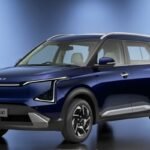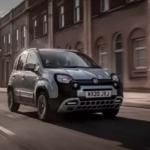As Chinese automaker BYD continues to shake up the global automotive market with electric supercars like the Yangwang U9, Lamborghini remains unfazed. The iconic Italian marque, renowned for its visceral performance and emotional design, is doubling down on hybridization over full electrification—dismissing pure EV hypercars as compromising the essence of what makes a Lamborghini truly special.
Speaking at the Australian launch of Lamborghini’s new Temerario, a hybrid V8 successor to the Huracán, CEO Stephan Winkelmann directly addressed the surge in high-performance electric cars emerging from China. While acknowledging the advancements made by brands like BYD, Winkelmann was clear: all-electric supercars lack the soul Lamborghini owners crave.
“No, we always said that the pure electric supercar is not here to be successful,” Winkelmann said. “Some already admitted it, and they’re putting them out of the market… It’s the brand, it’s the residual value, it’s the missing sound—what you want is something which is real.”
Despite the BYD Yangwang U9 boasting jaw-dropping specs—a quad-motor setup producing 1,306 hp, 0–100 km/h in 2.36 seconds, and an intelligent suspension system that can literally make the car hop—Lamborghini isn’t worried. Winkelmann argues that raw numbers alone don’t win hearts.
Instead of following the full-electric route, Lamborghini has chosen to hybridize its lineup. The Temerario combines a twin-turbo V8 with electric motors for more power than a Ferrari 296 GTB and revs higher than a Porsche 911 GT3 RS. Meanwhile, the flagship Revuelto pairs a naturally aspirated V12 with plug-in hybrid tech, staying true to the brand’s unmistakable character.
Winkelmann insists this approach preserves what customers value most: emotion, sound, heritage, and drivability—qualities he believes full EVs can’t yet replicate.
One of the main criticisms Winkelmann has for electric supercars is their lack of engine noise—a defining feature of any Lamborghini. While acknowledging the possibility of artificial sound enhancement, he’s skeptical of its effectiveness.
“I am personally against a fake internal combustion engine sound,” he said. “But… amplifying what is there as a sound has to be done in the right way. This is pretty complex.”
Lamborghini is, however, open to implementing technologies like simulated gear shifts in future EVs to enhance driving engagement, potentially making their upcoming electric GT (slated for 2027) more emotionally resonant.
Beyond performance and engineering, Lamborghini is leveraging its brand equity—cultivated over decades through motorsport, design, and pop culture. Winkelmann highlighted Lamborghini’s massive appeal on social platforms like TikTok and Instagram, ensuring even non-drivers become lifelong fans.
“We have a lot of kids now which are loving us… even the majority who will never have the opportunity to own a Lamborghini.”
This cultural resonance, Winkelmann argues, sets Lamborghini apart from newcomers. While BYD’s Yangwang U9 may impress with specs, Lamborghini’s blend of heritage, emotional appeal, and global fanbase makes it a luxury icon with staying power.
Lamborghini is not ignoring the electric revolution—it’s just taking a more measured approach. The brand’s first EV, a 2+2 GT, has been delayed to 2027 as EV market demand remains uncertain. Plans to fully electrify the Urus SUV have also been shelved in favor of a plug-in hybrid strategy.
While brands like BYD race to push electric boundaries, Lamborghini is focused on refining the driving experience—ensuring that even in an electrified future, a Lamborghini still feels, sounds, and drives like nothing else.





